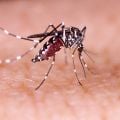
Image credit: Shutterstock
Viruses shown to evolve as a result of different immune responses in different ethnic populations
New research into the HIV-1 virus has shed light on an important factor in the evolution of viruses, which is likely also to affect SARS-CoV-2 (the virus which causes COVID-19). This new insight could have important implications for vaccine development.
Differences in the cellular immune system in different human populations are now known to influence a virus’s evolution. A virus will adapt and may ultimately form subtypes to escape common antiviral immune responses.
For the first time, in a paper published in Virus Evolution, Professor Astrid Iversen of the Nuffield Department of Clinical Neurosciences at the University of Oxford and collaborators have shown a strong link between ethnic diversity in African countries and the diversity of HIV-1 p24Gag and HIV-1 subtypes.
By analysing the HIV-B epidemic in the USA, they also reveal that viral evolution is ongoing and is affected by the continuously increasing proportion of African Americans in the HIV-infected population over time. This result underscores how inequalities in health care can affect pathogen evolution if a specific ethnic group is disproportionately disadvantaged.
In the fight against HIV-1 and SARS-CoV-2, the cellular immune response plays a crucial role. The human leukocyte antigen (HLA) system is a fundamental part of that cellular immune response. When fighting infections, HLA molecules present small fragments of the virus’s proteins to our immune cells. The make-up of an individual’s HLA system will determine which parts of a virus are targeted by the immune response, and this will affect the quality of the response. Although thousands of HLA variants exits, a few are found at high frequency in each population.
Professor Iversen explains, ‘Our research shows that, because of this variation in the population’s HLA system, over time, a virus will likely adapt to HLA frequency differences in global populations.’
The variations in the HLA system are linked to geographical location, because the system is affected by which infectious challenges have already been faced. Historic interbreeding between Neanderthals and Denisovans (two extinct human species that ranged across Asia during the Lower and Middle Paleolithic) has also contributed to differences in the HLA system in modern human populations, as these archaic humans already carried HLA variants optimised to fight Eurasian pathogens.
It is already known that the combinations of HLA frequencies in human populations reflect the immune system’s adaption to different combinations of infections challenges over time. The new research shows that novel viruses, in turn, adapt to differences in population-specific HLA frequencies.
Iversen’s work has implications for the design of vaccines. Current HIV-1 vaccines typically use the subtype that circulates in the target population. This is a sub-optimal approach, because that virus subtype will be highly adapted, in order to avoid evoking strong immune responses in the majority of that population.
If a vaccine aims to evoke cellular immune responses, then the HLA composition of the target population should be considered first. This information, together with knowledge of which parts of the virus these HLA variants target, could be combined with novel mRNA vaccine technologies to generate population-specific, effective vaccines.
 New study estimates NHS England spends 3% of its primary and secondary care budget on the health impacts of temperature
New study estimates NHS England spends 3% of its primary and secondary care budget on the health impacts of temperature
 International collaboration launches largest-ever therapeutics trial for patients hospitalised with dengue
International collaboration launches largest-ever therapeutics trial for patients hospitalised with dengue
 Oxford-built multi-agent assistant for cancer care to be piloted in collaboration with Microsoft
Oxford-built multi-agent assistant for cancer care to be piloted in collaboration with Microsoft
 World's first Phase II Nipah virus vaccine trial launch
World's first Phase II Nipah virus vaccine trial launch